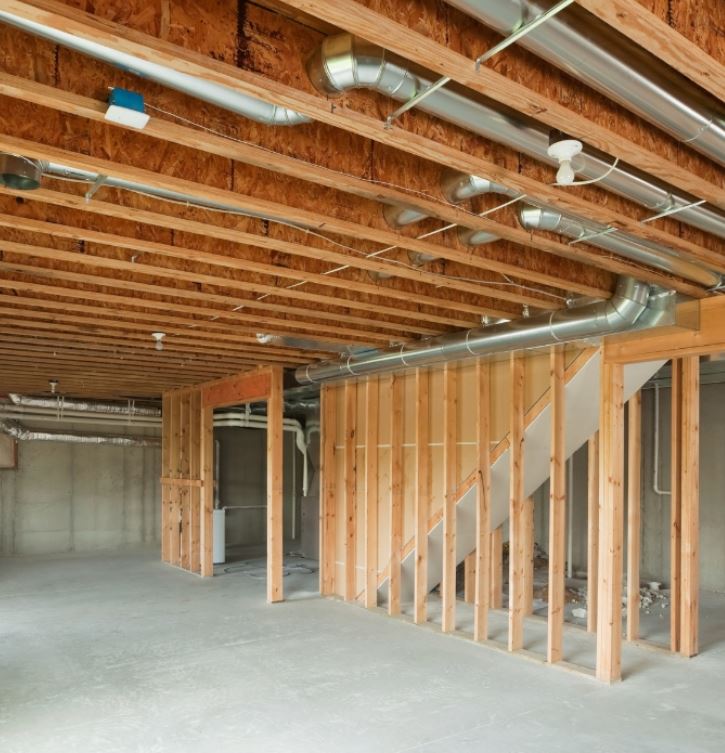Can You Underpin a Finished Basement? A Comprehensive Guide
When it comes to maximizing the space in your home, basements often hold untapped potential. Whether you’ve already transformed your basement into a cozy living area, a home office, or a recreational space, you might be wondering if it’s possible to underpin a finished basement. The short answer is yes, but it’s a complex process that requires careful planning, expertise, and a clear understanding of the risks and rewards. In this blog, we’ll explore what underpinning entails, why you might consider it, and how to navigate the process without compromising your finished space.
What is Underpinning?
Underpinning is a construction technique used to strengthen and stabilize the foundation of a building. It involves excavating soil beneath the existing foundation and extending it to a deeper, more stable level. This process is typically done to address structural issues, increase the load-bearing capacity of the foundation, or create additional headroom in a basement.
There are several methods of underpinning, including:
- Mass Concrete Underpinning: The traditional method, where concrete is poured in sections to create a new, deeper foundation.
- Beam and Base Underpinning: A reinforced concrete beam is constructed below the existing foundation, transferring the load to a new concrete base.
- Mini-Piled Underpinning: Ideal for unstable soil conditions, this method uses steel or concrete piles driven deep into the ground to support the structure.
Why Underpin a Finished Basement?
Underpinning a finished basement is not a decision to be taken lightly. It’s a significant investment of time and money, but there are several compelling reasons why homeowners might choose to undertake this project:
- Increase Ceiling Height: Many older homes have basements with low ceilings, making them feel cramped and unwelcoming. Underpinning can create additional headroom, transforming the space into a more functional and comfortable area.
- Address Structural Issues: If your home’s foundation is settling or showing signs of damage, underpinning can stabilize the structure and prevent further problems.
- Add Value to Your Home: A well-executed underpinning project can significantly increase the value of your property by creating more usable living space.
- Accommodate New Features: If you’re planning to add features like a bathroom, kitchenette, or home theater, underpinning can provide the necessary space and structural support.
Challenges of Underpinning a Finished Basement
While underpinning offers numerous benefits, it’s not without its challenges—especially when dealing with a finished basement. Here are some key considerations:
- Disruption to the Space: Underpinning requires excavation, which means your finished basement will need to be partially or completely dismantled. Walls, flooring, and ceilings may need to be removed to access the foundation.
- Cost: Underpinning is an expensive endeavor. The cost can vary widely depending on the size of the basement, the method used, and the complexity of the project. On average, homeowners can expect to pay anywhere from 20,000to20,000to50,000 or more.
- Time-Consuming: Underpinning is not a quick process. It can take several weeks or even months to complete, depending on the scope of the project.
- Structural Risks: If not done correctly, underpinning can compromise the structural integrity of your home. It’s crucial to work with experienced professionals who understand the intricacies of the process.
- Permits and Regulations: Underpinning typically requires permits and must comply with local building codes. Failure to adhere to these regulations can result in fines or legal issues.
Steps to Underpin a Finished Basement
If you’ve weighed the pros and cons and decided to move forward with underpinning, here’s a general overview of the steps involved:
- Consult a Structural Engineer: The first step is to consult a structural engineer to assess your home’s foundation and determine if underpinning is necessary. They will also recommend the best method for your specific situation.
- Obtain Permits: Once you have a plan in place, you’ll need to obtain the necessary permits from your local building department.
- Prepare the Space: If your basement is finished, you’ll need to remove any walls, flooring, or fixtures that could obstruct the underpinning process. This may involve temporarily relocating furniture and belongings.
- Excavate and Underpin: The contractor will excavate sections of the foundation and begin the underpinning process. This is done in stages to ensure the stability of the structure.
- Reinforce and Restore: Once the underpinning is complete, the basement will need to be reinforced and restored. This may include installing new walls, flooring, and ceilings, as well as addressing any plumbing or electrical systems that were affected.
- Inspect and Finalize: After the work is done, a final inspection will be conducted to ensure the project meets all building codes and safety standards.
Tips for a Successful Underpinning Project
- Hire Experienced Professionals: Underpinning is not a DIY project. It requires specialized knowledge and equipment, so it’s essential to hire a reputable contractor with experience in underpinning.
- Plan for Disruptions: Be prepared for the disruption to your daily life. If your basement is a frequently used space, make alternative arrangements during the construction process.
- Budget for Contingencies: Underpinning projects often uncover unexpected issues, such as hidden plumbing or electrical lines. It’s a good idea to set aside a contingency budget to cover these unforeseen expenses.
- Communicate with Your Contractor: Clear communication with your contractor is key to a successful project. Make sure you understand the timeline, costs, and potential challenges before work begins.
- Consider the Long-Term Benefits: While the process can be daunting, remember that underpinning can significantly enhance the functionality and value of your home.
Is Underpinning Worth It?
Underpinning a finished basement is a major undertaking, but for many homeowners, the benefits far outweigh the challenges. By increasing ceiling height, addressing structural issues, and creating more usable space, underpinning can transform your basement into a true extension of your home. However, it’s crucial to approach the project with careful planning, realistic expectations, and a trusted team of professionals.
If you’re considering underpinning your finished basement, take the time to research, consult experts, and weigh your options. With the right preparation, you can unlock the full potential of your basement and enjoy a more spacious, functional, and valuable home.
Have you ever considered underpinning your basement? Or have you already gone through the process? Share your thoughts and experiences in the comments below! We’d love to hear your story.







